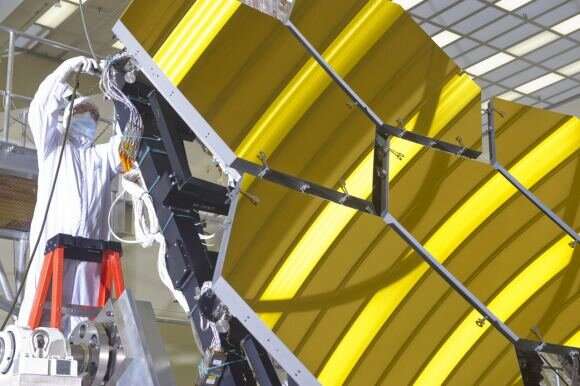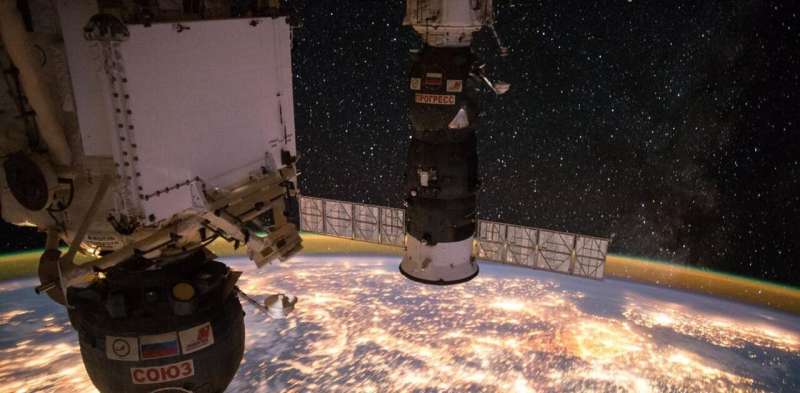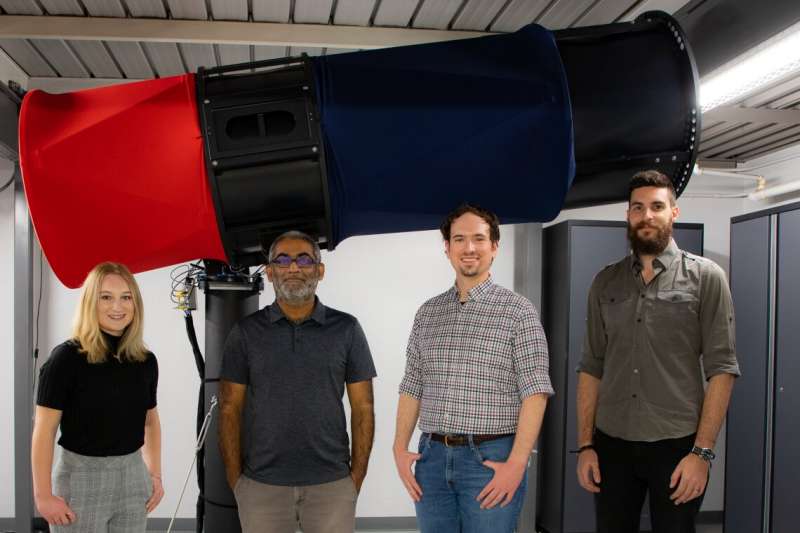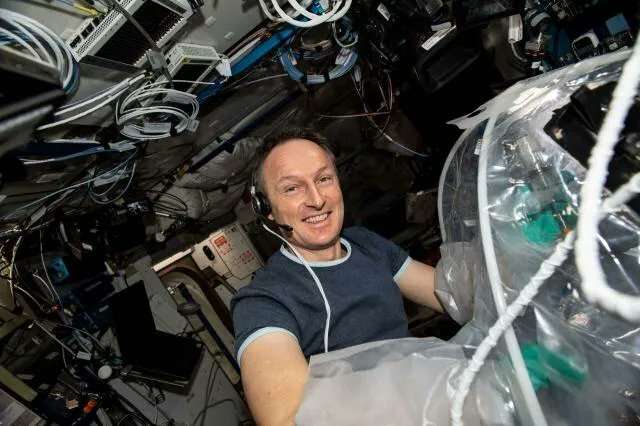
Copernical Team
How to design a sail that won't tear or melt on an interstellar voyage
 Astronomers have been waiting decades for the launch of the James Webb Space Telescope, which promises to peer farther into space than ever before. But if humans want to actually reach our nearest stellar neighbor, they will need to wait quite a bit longer: a probe sent to Alpha Centauri with a rocket would need roughly 80,000 years to make the trip.
Igor Bargatin, Associate Professor in t
Astronomers have been waiting decades for the launch of the James Webb Space Telescope, which promises to peer farther into space than ever before. But if humans want to actually reach our nearest stellar neighbor, they will need to wait quite a bit longer: a probe sent to Alpha Centauri with a rocket would need roughly 80,000 years to make the trip.
Igor Bargatin, Associate Professor in t James Webb telescope going through cooling process

Cooling things down in space is trickier than it might sound. But that is exactly the process the James Webb telescope is going through right now. Getting down to cryogenic temperature is imperative for its infrared imaging systems to work correctly. While the telescope has already started, it will be another few weeks before the process is complete and it's ready to start capturing its first groundbreaking infrared images of the universe.
That might seem like an exceptionally long time to cool something down, but it's all part of the difficulty of doing so in space. The first tricky point is getting out of the sun, which can heat equipment up to blistering temperatures if it is exposed to direct sunlight. Luckily, James Webb has a specially designed sun shield to keep it out of direct sunlight.
The rest of the telescope's instruments have been cooling since the sunshield was deployed several weeks ago.
Fresh from the ISS: How high school students are leading an experiment on space-made yogurt

It's probably no surprise that keeping healthy in space is incredibly important. And without the typical resources found on Earth, creative solutions have to be explored.
Right now, some excited Year 10 and 11 students from around Victoria are waiting with anticipation as their space-made yogurt—fresh off the International Space Station (ISS)—heads back to Australia from NASA facilities in the United States.
The students worked with researchers at the Swinburne University of Technology to design an experiment investigating the nutritional values of space-made yogurt. The results could provide insight into how to best help astronauts with vital nutrition during long-haul spaceflight.
The human gut
A critical factor in human health is the overall health of our gut microbiome, which is estimated to host more than 100 trillion bacteria.
Maintaining the health and diversity of these bacteria might be even more important in space than on Earth. In 2019, NASA released groundbreaking results from a year-long study on astronaut twins Mark and Scott Kelly.
In 2016, Scott spent 365 days on the ISS, experiencing reduced gravity, while Mark remained on Earth.
Decisions from the 2022 Space Summit
Press Release N° 4–2022
European leaders today confirmed their ambitious plans to work closely together to accelerate Europe as a world leader in space during a series of high-level meetings held in Toulouse, France.
Exploring new worlds
 Video:
00:02:19
Video:
00:02:19
As part of Agenda 2025, ESA will take preparatory steps towards a sample return mission from the moons of giant planets, and will foster innovation by challenging commercial companies to develop a next generation of competitively priced European space transportation systems.
Space science and planetary exploration have a unique inspirational power for engaging young generations in science, technology, engineering and maths, creating a highly educated workforce for the future.
Collaborating with the European space industry to foster innovation generates economic growth and new revenues, as well as creating new jobs for European citizens. All the money invested in space
Students confirm errant rocket's Chinese origin, track lunar collision course

How well does concrete work in space?

Concrete is not the first material one usually thinks of when exploring space. Nor is it the focus of much cutting-edge research. The most common building material has been used by humanity for thousands of years. But surprisingly, little is still known about some of its properties, due in no small part to the limitations of the environments it can be tested in. Now, this most ubiquitous of materials will be tested in a new environment—the microgravity aboard the International Space Station.
The experiment, part of the "Cosmic Kiss" mission, will have German astronaut Matthias Maurer hand-mixing concrete in microgravity using a specially designed mixer no larger than the size of his hand and a giant inflatable bag. That obviously will not lead to much concrete, but its properties will be particularly telling to scientists.
Webb sees its first star - 18 times
 The James Webb Space Telescope is nearing completion of the first phase of the months-long process of aligning the observatory's primary mirror using the Near Infrared Camera (NIRCam) instrument.
The team's challenge was twofold: confirm that NIRCam was ready to collect light from celestial objects, and then identify starlight from the same star in each of the 18 primary mirror segments. T
The James Webb Space Telescope is nearing completion of the first phase of the months-long process of aligning the observatory's primary mirror using the Near Infrared Camera (NIRCam) instrument.
The team's challenge was twofold: confirm that NIRCam was ready to collect light from celestial objects, and then identify starlight from the same star in each of the 18 primary mirror segments. T Surprisingly high fraction of dead galaxies found in ancient galactic city
 An international team of astronomers led by researchers at the University of California, Riverside, has discovered an unusual massive cluster of young galaxies forming in the early universe. The newly discovered growing galactic metropolis, named MAGAZ3NE J095924+022537, is a newborn galaxy cluster, or protocluster, consisting of at least 38 member galaxies, and is about 11.8 billion light-years
An international team of astronomers led by researchers at the University of California, Riverside, has discovered an unusual massive cluster of young galaxies forming in the early universe. The newly discovered growing galactic metropolis, named MAGAZ3NE J095924+022537, is a newborn galaxy cluster, or protocluster, consisting of at least 38 member galaxies, and is about 11.8 billion light-years From matter to antimatter, to and fro - trillions of times a second
 We think of matter and antimatter as being as opposite as fire and water. There are, however, particles that can behave as representatives once of the world of matter, once the world of antimatter. An international group of scientists working on experiments at the LHCb detector have reported their measurement of the extreme speed of oscillation of these sorts of particles between the two worlds.
We think of matter and antimatter as being as opposite as fire and water. There are, however, particles that can behave as representatives once of the world of matter, once the world of antimatter. An international group of scientists working on experiments at the LHCb detector have reported their measurement of the extreme speed of oscillation of these sorts of particles between the two worlds. 